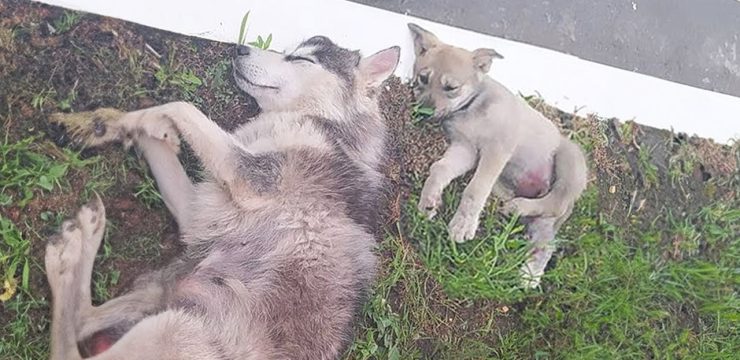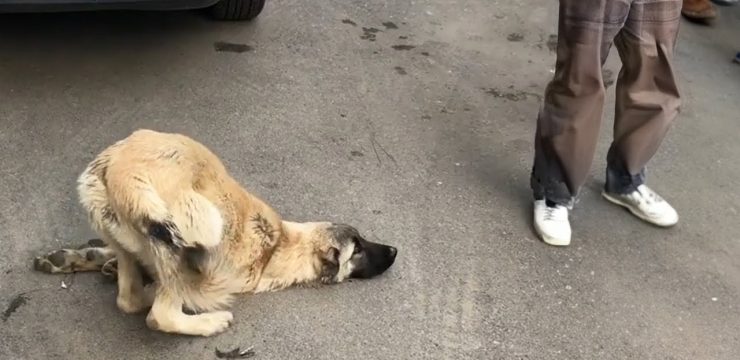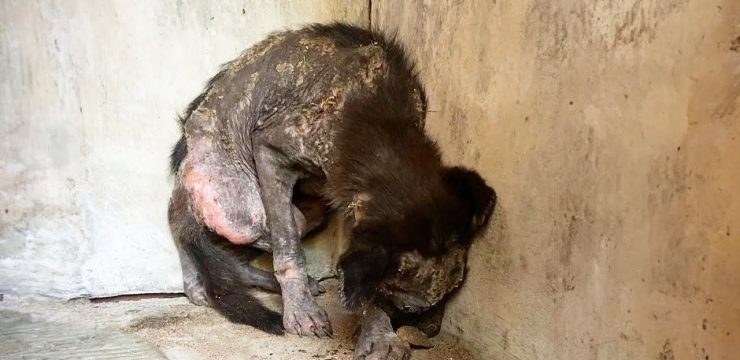Anyone who’s ever spent time in Arizona—or even just taken a quick look at the weather forecast—knows that the heat can be absolutely brutal. Temperatures regularly soar past what’s considered comfortable, and for anyone or anything left outside without protection, it can be life-threatening. Unfortunately, not everyone seems to fully grasp just how dangerous the Arizona sun can be. One heartbreaking case from late May made that painfully clear—and reminded everyone of the importance of speaking up for those who can’t speak for themselves.

It all began on May 29, when the Arizona Humane Society received a call from a concerned neighbor. The report was disturbing: a dog had been left outside in scorching heat, tied up with a rope so short that it couldn’t move freely, with no access to shade or water. The temperature had reached a blistering 99 degrees Fahrenheit, and the dog was fully exposed to the elements. Alarmed by the urgency of the situation, the Humane Society immediately dispatched one of their investigators to the scene. What they found was even worse than expected.
The dog, a clearly exhausted and distressed mother, was tethered to a metal fence, desperately trying to keep her paws on a narrow patch of dirt to avoid the scalding pavement. The sidewalk beneath her had reached a staggering 133 degrees Fahrenheit—hot enough to cause burns within seconds. She was panting heavily, visibly weak, and worst of all, painted. Her body had been marked with bright, unnatural leopard-like spots, a cruel and confusing decoration that served no purpose other than to attract attention in the most callous way.
Despite the torment she had endured, the dog’s temperament was nothing short of remarkable. According to Ruthie Jesus, a field manager at the Arizona Humane Society, the dog remained gentle and trusting. “Even a friendly dog that is tethered or chained out sometimes will be defensive because it’s a very vulnerable position for them to be in,” Jesus explained to The Dodo. “She was not like that.” Incredibly, even in her vulnerable state, she showed nothing but sweetness to her rescuers.
The team immediately went to work. They gave her water, which she gratefully drank, and placed a towel on the scorching pavement so she could finally rest her weary body without burning her skin. Their concern quickly shifted to her puppies—because she was clearly lactating, and somewhere nearby, there had to be newborns in need of care. When police located the owner and questioned him, he admitted he had found the dog as a stray about a month earlier. When asked about her puppies, he led the team inside the house.
What they found inside was devastating. There, separated from their mother, were nine tiny puppies—only three weeks old. These babies had been deprived of the nurturing they needed, missing out on essential time nursing with their mother. It was a moment of clarity for the owner, who then made the right decision. “At that point, the owner did make the decision that they were not able to care for \[the dogs] appropriately moving forward,” Jesus said. “They chose to surrender \[them] immediately.”
Once in the care of the Arizona Humane Society, the dog—now lovingly named Rainbow Brite—and her pups, dubbed the Sprites, were rushed to the Lazin Animal Foundation Trauma Hospital. There, veterinarians worked quickly to cool Rainbow Brite’s body using cold towels and ensure that she and her puppies received the medical attention and rest they desperately needed. Rainbow Brite was underweight and exhausted, but thanks to immediate intervention, she is expected to make a full recovery and continue nursing her puppies.
As for the leopard-print markings, they appeared to be purely cosmetic. “She’s not suffering any inflammation or irritation,” Jesus noted. “So they’re just for show until they eventually fade away.” Still, the bizarre body paint underscores a bigger issue: how some people treat animals as accessories or props rather than living beings with needs and emotions.
Unfortunately, Rainbow Brite’s case isn’t unique. A troubling trend has recently taken hold on platforms like TikTok, where videos featuring dogs dyed in vivid, unnatural colors have gone viral. In these clips, pet owners attempt to transform their dogs into tigers, zebras, or even fictional characters—all for entertainment or likes. While some viewers may find the results amusing or cute, veterinary professionals have begun sounding the alarm. This isn’t just a harmless fad—it can pose real health risks to the animals, including skin irritation, allergic reactions, and stress. Dogs aren’t toys. They’re not meant to be decorated like dolls or used for social media content at the expense of their well-being.
Thankfully, Rainbow Brite and her puppies were rescued in time. Their story could have ended in tragedy, but instead, they are now safe, loved, and receiving the care they need. All ten dogs are now living in a foster home where they’ll remain together until the puppies are at least eight weeks old and strong enough to be adopted. They’re in good hands with people who understand what it means to care for animals with compassion and respect.
And it’s all thanks to one person—a Good Samaritan neighbor—who noticed something wasn’t right and chose to speak up. That call made all the difference. It saved lives and gave this mother dog and her babies a second chance at happiness. This story is a powerful reminder of how vital it is to remain vigilant, to care, and to act when we see an animal in need. Compassion isn’t just a feeling—it’s a responsibility. And in this case, it was the difference between suffering and safety, between neglect and a new beginning.





